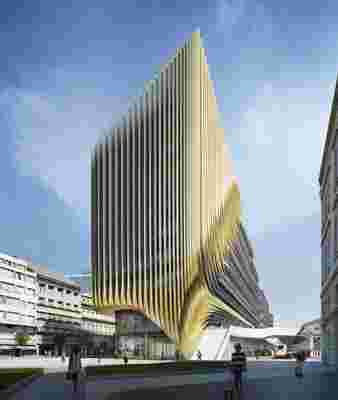Zaha Hadid Architects recently unveiled plans for its newest venture, a regeneration project adjacent to the Masaryk Railway Station in Prague. The firm of the late architect, who died in March , plans to renovate a tract of land in central Prague, near the banks of the Vltava River, an area that has been derelict for years. Once completed, the 237,000-square-foot site will become a business hub, consisting of a series of curved mid-rise buildings interspersed with public plazas. Although the design doesn’t mimic the zigzags Zaha Hadid implemented for the Riverside Museum in Glasgow, Scotland, or the dreamlike quality of the Guangzhou Opera House in China, the regeneration project—though dynamic in its own respect—was purposely muted in places in an effort to blend with the current architectural makeup of the Czech capital.
Given the shortage of office space in Prague, the new plan incorporates sleek commercial buildings, many of which will help accommodate the city’s growing IT sector. The project will also be used for civic purposes, with the plazas connecting parts of the city that have been cut off from one another. Furthermore, the plan will include access to bus and train terminals in and around the area.

The side of a building shows the flair many associate with Zaha Hadid’s designs.
Prague, similar to Paris and other European cities, is sectioned in districts. Beginning with district 1 in the old part of the city (where the Masaryk Railway Station is located), the zones spiral out in the shape of a snail shell. The regeneration project would stitch together districts 1, 3, and 8, thereby creating a new passageway to the city from Václav Havel Airport. Though no start date for construction has been announced, Zaha Hadid Architects plans to complete the project by 2022.
